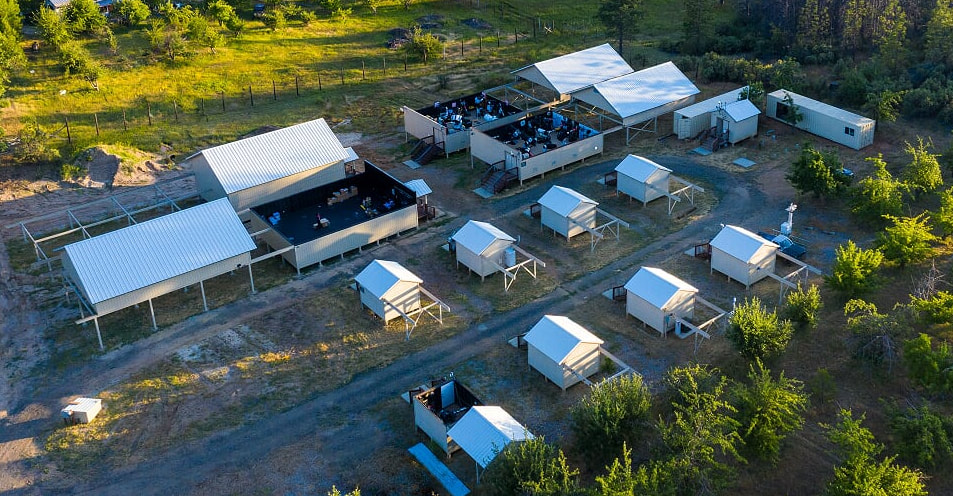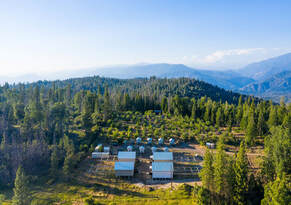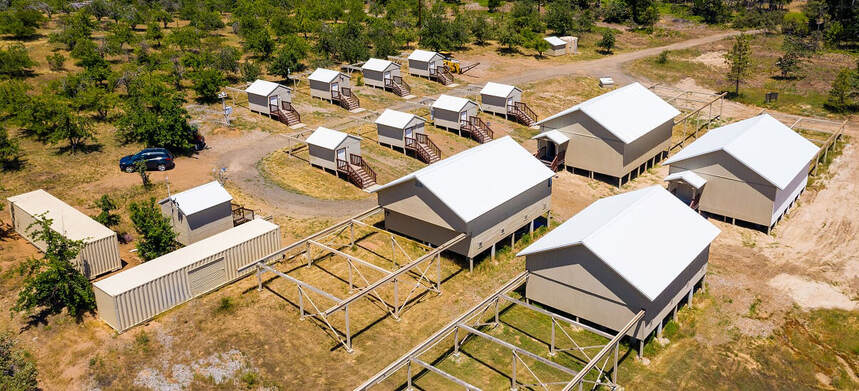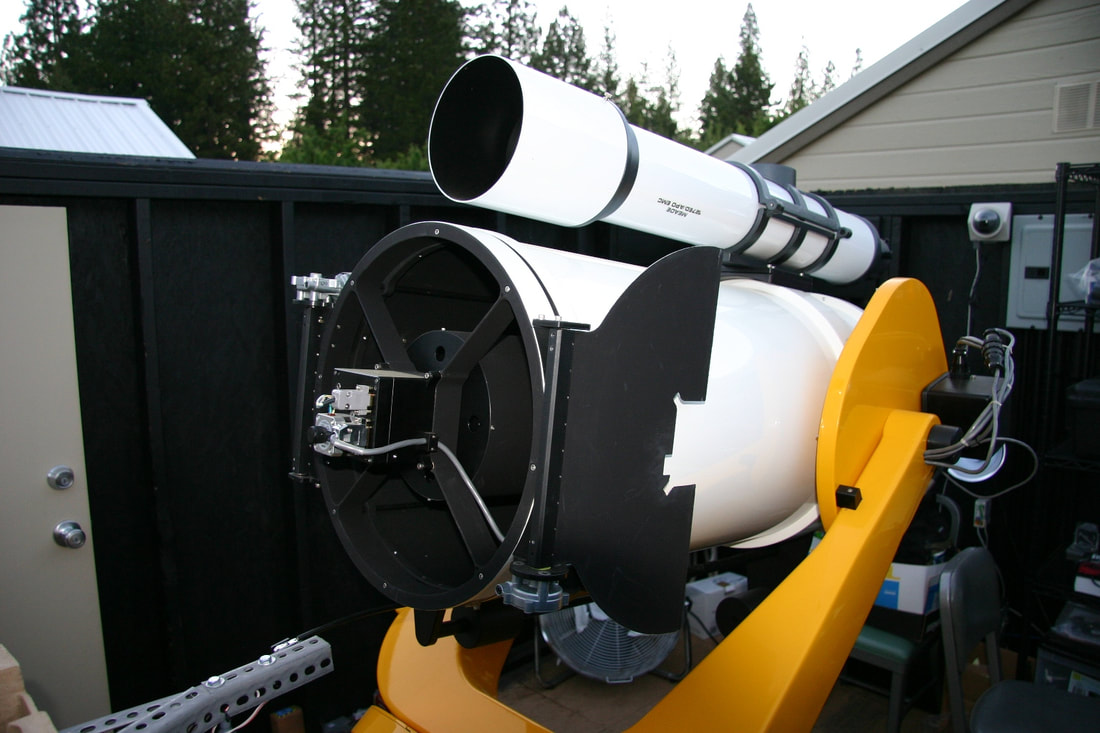Sierra Remote Observatories: An Ideal Site for Astronomers, Space Industry Professionals and Astrophotographers
An Introduction to Sierra Remote Observatories
SRO is a group of remote observatories located in the Sierra Nevada Mountains and dedicated to remote and robotic data acquisition and imaging. We will host your telescope. We have been operational continuously since 2007. We are uniquely located in the Sierra Nevada Mountains in an area with excellent imaging conditions including:
• one arcsecond summer seeing
• dark skies at 21.78 mag/sq arcsecond V band
• a very low incidence of thunderstorms
• no summer monsoons
• average wind speeds of only 1 mph
• maximum wind gusts averaging only 10 mph
• an average of 290 clear nights per year.
We have easy access, being only one hour from the Fresno-Yosemite International Airport and 4 hours from Los Angeles or San Francisco, by car. We have robust, secure and fast fiber optic internet with satellite back up and network redundancy and security. Roof control, opening and closing, is based on on-site live weather telemetry. Our clients have access to roof position files so they can optimize their imaging time and also the ability to have weather/roof position/seeing conditions embedded into their fits files. Our clients include astrophysicists, space industry professionals, astronomical institutes and advanced amateur imagers. Contact us if you have any questions or if you are looking for a unique site to place your telescope.
Read More
• one arcsecond summer seeing
• dark skies at 21.78 mag/sq arcsecond V band
• a very low incidence of thunderstorms
• no summer monsoons
• average wind speeds of only 1 mph
• maximum wind gusts averaging only 10 mph
• an average of 290 clear nights per year.
We have easy access, being only one hour from the Fresno-Yosemite International Airport and 4 hours from Los Angeles or San Francisco, by car. We have robust, secure and fast fiber optic internet with satellite back up and network redundancy and security. Roof control, opening and closing, is based on on-site live weather telemetry. Our clients have access to roof position files so they can optimize their imaging time and also the ability to have weather/roof position/seeing conditions embedded into their fits files. Our clients include astrophysicists, space industry professionals, astronomical institutes and advanced amateur imagers. Contact us if you have any questions or if you are looking for a unique site to place your telescope.
Read More
What's New at Sierra Remote Observatories
|
Rapid Growth at SRO
When SRO saw first light in 2007 there were 8 individual observatories with only two initially in use, those two being used by the original founders of SRO, Keith Quattrocchi and Mel Helm. With SRO's excellent seeing conditions we were producing high quality images and within months the 8 observatories were leased with requests for more space. As a result we put up our first multi-telescope observatory, designed to house up to 14 telescopes. Within a few years that building filled and a second building was constructed. It also filled quickly. As a result we have recently constructed two new multi-telescope buildings. These are now completed and operational, and can house scopes with apertures up to 0.75 meters. Larger meter class telescopes can be placed in dome or roll-off roof observatories on site. You can see the construction of these two building and other images of the site and weather/seeing information at our website: www.sierra-remote.com |
Site Conditions & Monitoring
SRO monitors site seeing, darknesss, air particulates and weather on site. This data is always available on our website ( www.sierra-remote.com ). Seeing monitos include an Alcor Systems Cyclope Seeing Monitor and an SBIG Seeing Monitor. These continue to demonstrate 1 arcsecond summer and 1.2 arcsecond winter seeing at SRO. We have a darkness monitor (Unihedron Sky Quality Meter LE utilizing Knightware Software), air particulate monitor, multiple on-site weather monitors, and cloud sensor monitoring. These and other seeing and weather parameters are available in the telemetry section of our website: www.sierra-remote.com. |
Infrastructure Updates
At SRO we are continually improving and updating the infrastructure that allows uninterrupted data collection and imaging. We have fast fiber optic internet, satellite internet backup and secure router connectivity with redundancy. SRO has full time technical support. Most problems can be fixed on site or shipped out and replaced. We supply two hours per month of free support with additional support available, and will assist you with your telescope installation and updating. Thereafter our staff will be your "eyes, ears and hands" on-site. Our goal is to make your remote data acquisition and imaging experience as trouble free as possible. In addition, we have begun preparation of a client break/warm room which should be available by summer or fall, and a back-up generator which will be functional by Spring. Read More |
New Multi-telescope Buildings 11 and 12 Nearing Completion
On November 3rd, 2018 we began construction of two large custom designed multi-telescope buildings at SRO. These large structures, each 40 x 30 foot with 10 foot ceilings, are fully operational, with several new clients already in and imaging. These buildings were constructed for larger telescopes, with nearly 10 feet of space between each telescope. This allows us to easily handle larger telescopes, such as 28" or 32" telescopes in equatorial or Alt-Az configuration. Larger, meter class telescopes, can placed in individual domes or roll-off-roof buildings at SRO. In addition to these new buildings, allowing for immediate availability for those looking for a spot at SRO, we continue to update our infrastructure. Currently We now have fast fiber optic internet, an improved and standardized roof control system, emergency satellite internet backup and improved security. We also now have two full time technicians on site 7 days a week with urgent or emergency help available 24 hours a day. Also, a Warm/Break room will be made available to our clients by Late Spring or Summer, and aback up generator is being added and will operational by Spring. Our goal at SRO has always been to build a site which is as trouble free and seamless as possible, so our clients can focus on unencumbered data acquisition and imaging.
Two Additional Multi-telescope Observatories Now Operational
Above: SRO with two additional multi-telescope observatories (two large observatories in background). All buildings are now fully operational, with over 50 telescopes in use. The site has been continuously operational since first light in 2007.
Contact Information and Images from SRO
|
Fisheye view of SRO with the 4 larger multi-telescope buildings in the foreground and some of the 8 smaller private observatories in the background.
The Astronomical Telescope of the University of Stuttgart (ATUS) was established by the University's Institute of Space Systems with support of the Stratospheric Observatory for Infrared Astronomy (SOFIA) and funded by the DLR Space Administration.
The Korean Astronomy and Space Sciences Institute (KASSI's) 24" OGS. They are conducting polarimetry of the moon's surface.
|
The SRO newsletter is sent out semiannually. Our goal is to keep clients and interested professionals aware of changes, updates and projects at SRO. Feel free to contact us by phone or email at any time and with any questions you may have. Our phone numbers and email are listed below : Contact Information: Corporate Address 1865 E. Alluvial Ave, Ste 102 Fresno CA 93720 Phone: 530-401-0643 [email protected] Observatory Location: Auberry, California General Inquiries: [email protected] Founder, and Observatory Co-Manager Keith Quattrocchi [email protected] [email protected] 530-401-0643 Founder, and Observatory Co-Manager Mel Helm [email protected] Technical Support: Evan Cornelson [email protected] & Sam Miller [email protected] Website: www.sierra-remote.com |
The iTelescope.Net's 24" Planewave CDK.
The National Astronomical Research Institute of Thailand's (NARIT's) 0.7 meter Planewave telescope (CDK 700).
Dr. Fred Ringwald's 16" DFM Ritchey-Chretien Telescope. Dr. Ringwald, an astrophysicist at Fresno State University, has published dozens of peer reviewed articles on cataclysmic variables with data from SRO.
|











